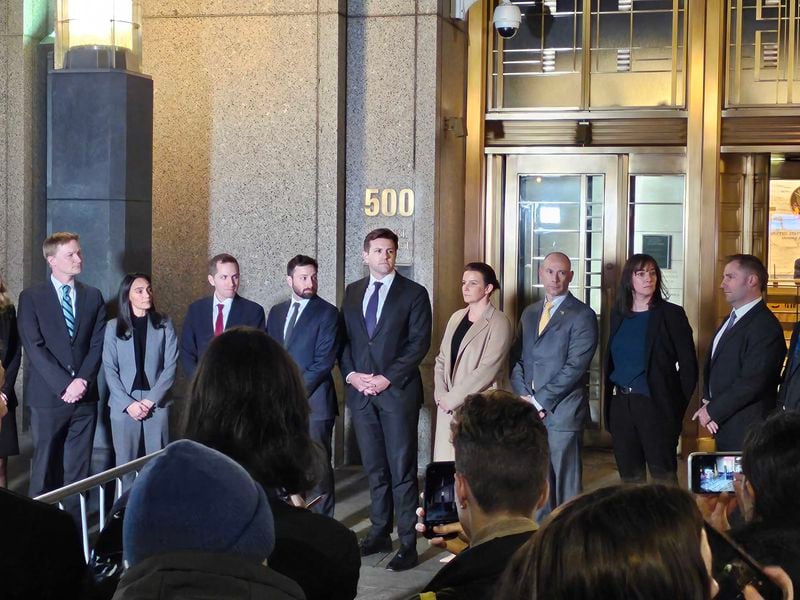Building on Bitcoin in the Age of Web3
On May 23, 2014, a few days after Credit Suisse pled guilty in a $2.6 billion settlement, Edmund Moy, Director of the United States Mint between 2006 to 2011, had an epiphany. Seeing public statements from the bank’s chief executive, Brady W. Dougan, hours after the charges were announced — criminal charges for a conspiracy that helped their wealthiest clients evade American taxes for decades — which said the fine “won’t do much damage,” Moy wrote on X, “It’s time banks got competition.”
The experience inspired him to write “The Currency Revolution, Courtesy of Bitcoin,” and to articulate a philosophy that put Bitcoin at the center of a movement he recognized as having the ultimate aim of disrupting money, payments, and all areas of finance. Through his own experience in the financial establishment, Moy started to believe Bitcoin could disrupt “traditional notions” of currencies, banking, and financial technology as a whole by ushering in a permissionless, decentralized financial system.
Bitcoin was buzzing with invention in those early years, and progress toward the guiding ethos of disrupting traditional finance seemed to be speeding up as a result. Tether launched on Bitcoin during this time, primitive decentralized exchanges like Bisq were launched for Bitcoin traders, and tokens – fungible and non-fungible – popped up like weeds, also on Bitcoin. The industry’s mood was a mix of exuberance, anxiety, and greed.
Solana, Ethereum, and other blockchains have spent years capitalizing on Bitcoin’s near complete stagnation
The vision Moy articulated was shared by nearly every Bitcoin enthusiast, but opinions on how to actualize these ideas of decentralized money and finance differed widely. From stablecoins to NFTs, almost every category of application commonly used in the decentralized finance industry today has its roots in Bitcoin, but a strong ideological undercurrent started to create a cultural shift toward discouraging and combating these projects. From Satoshi Dice in 2012 to Ordinals in 2024, Bitcoin’s history is littered with experimental projects that have been lambasted for spamming, polluting, or distracting the Bitcoin community from its mission. As a result, the developers, users, and capital that could have flowed to an industry of financial applications running on Bitcoin were incrementally pushed to other public blockchains.
Imagine creating a new financial system with a strong currency and nowhere to use it. That would be the inevitable outcome for Bitcoin if this anti-innovation movement was successful. Thankfully, they were not as the industry has witnessed over the past two years with inscriptions, runes, new layer-two networks, and other types of innovative projects being built on and around Bitcoin. Billions of dollars from professional investors and retail speculators alike have poured into kickstarting what many market participants see as a new era for Bitcoin, but in reality, it marks a cultural return to Bitcoin’s original mission of disrupting and decentralizing the world of finance.
Bitcoin is the best public blockchain in this industry of thousands of competitors. Bitcoin not only has the largest and most recognizable brand inside and outside the cryptocurrency industry, it also controls the largest pool of capital in crypto, which sits just over $1 trillion today. Bitcoin is also the most battle-tested public blockchain in the world with thousands of nodes running around the world and 100% network uptime for 11 consecutive years. Bitcoin is the biggest, most secure, most decentralized, most reliable permissionless financial network in the world. Building on Bitcoin means building on the best.
But Bitcoin has a lot of catching up to do. Solana, Ethereum, and other blockchains have spent years capitalizing on Bitcoin’s near complete stagnation by incubating ecosystems that are home to hundreds of applications, thousands of users, and billions of dollars. Even the Lightning Network, which has long been the darling of the “anti-DeFi” sect in Bitcoin, has seen the number of coins held on its network stagnant for years.
Now is the time to recommit to making Bitcoin the home of innovation and experimentation in the cryptocurrency industry again. If Bitcoin is not the gateway to permissionless finance for new users, we will have failed. If Bitcoin becomes nothing more than an asset custodied by ETF providers, we will have failed. If the world’s best form of money is not adopted alongside the development of a native financial system powered by Bitcoin, we will have failed. The technocultural norms and habits that have arrested Bitcoin development for years must be stomped out completely.
Building the future of money and finance on Bitcoin requires an army of builders. In the past two years, hundreds of new founders and engineers have started building on Bitcoin, but that number needs to continue growing. At Botanix Labs, we are developing one piece of Bitcoin’s future with a Layer 2 network called the Spiderchain. But everyone building anything with Bitcoin should be proud to be among this multitude of people collaborating with each other to bootstrap a decentralized financial ecosystem. Bitcoin’s best days are still ahead thanks to the combined efforts of this group of builders.
Bitcoin is a civilization-altering invention that should empower ordinary people to escape control of a financial system that is so concentrated and censored. But Bitcoin needs to cultivate an alternative financial system to replace its incumbents. Experimentation and innovation should be core tenets in this new financial era of transparency, decentralization, and permissionlessness. What Moy and thousands of others see as Bitcoin’s future for finance is up to all of us to actualize. Considering all that is at stake, we have to at least try.
Note: The views expressed in this column are those of the author and do not necessarily reflect those of CoinDesk, Inc. or its owners and affiliates.









